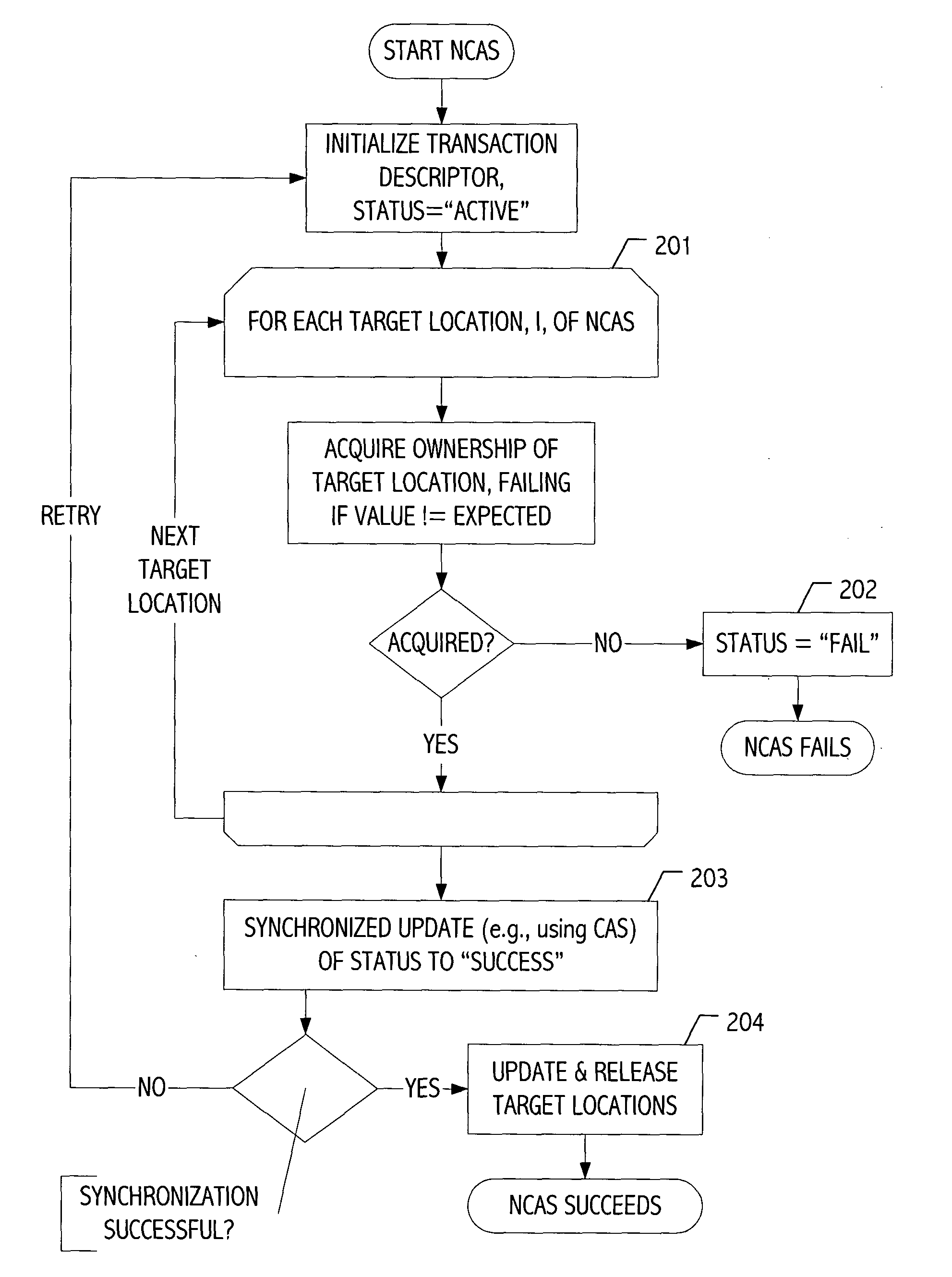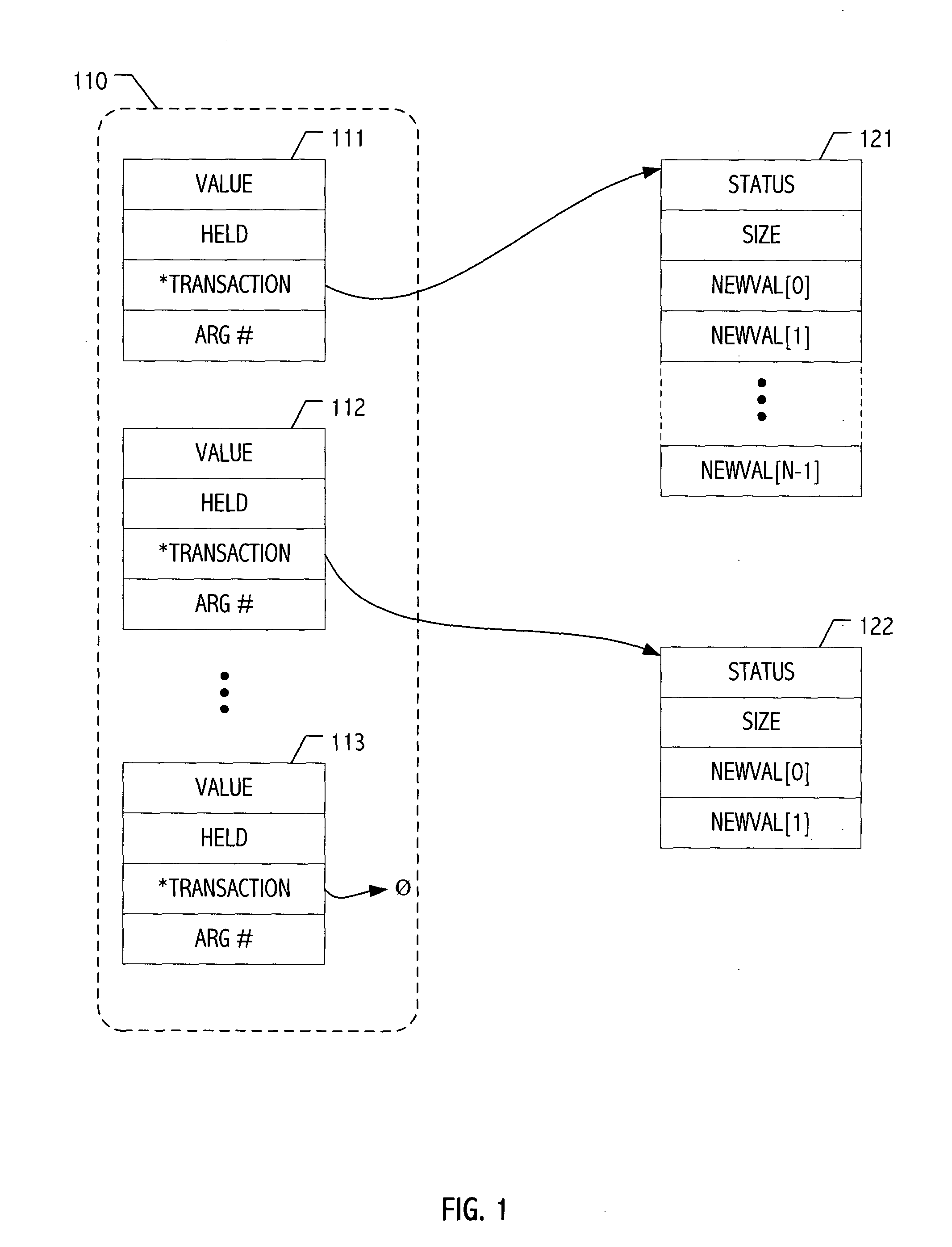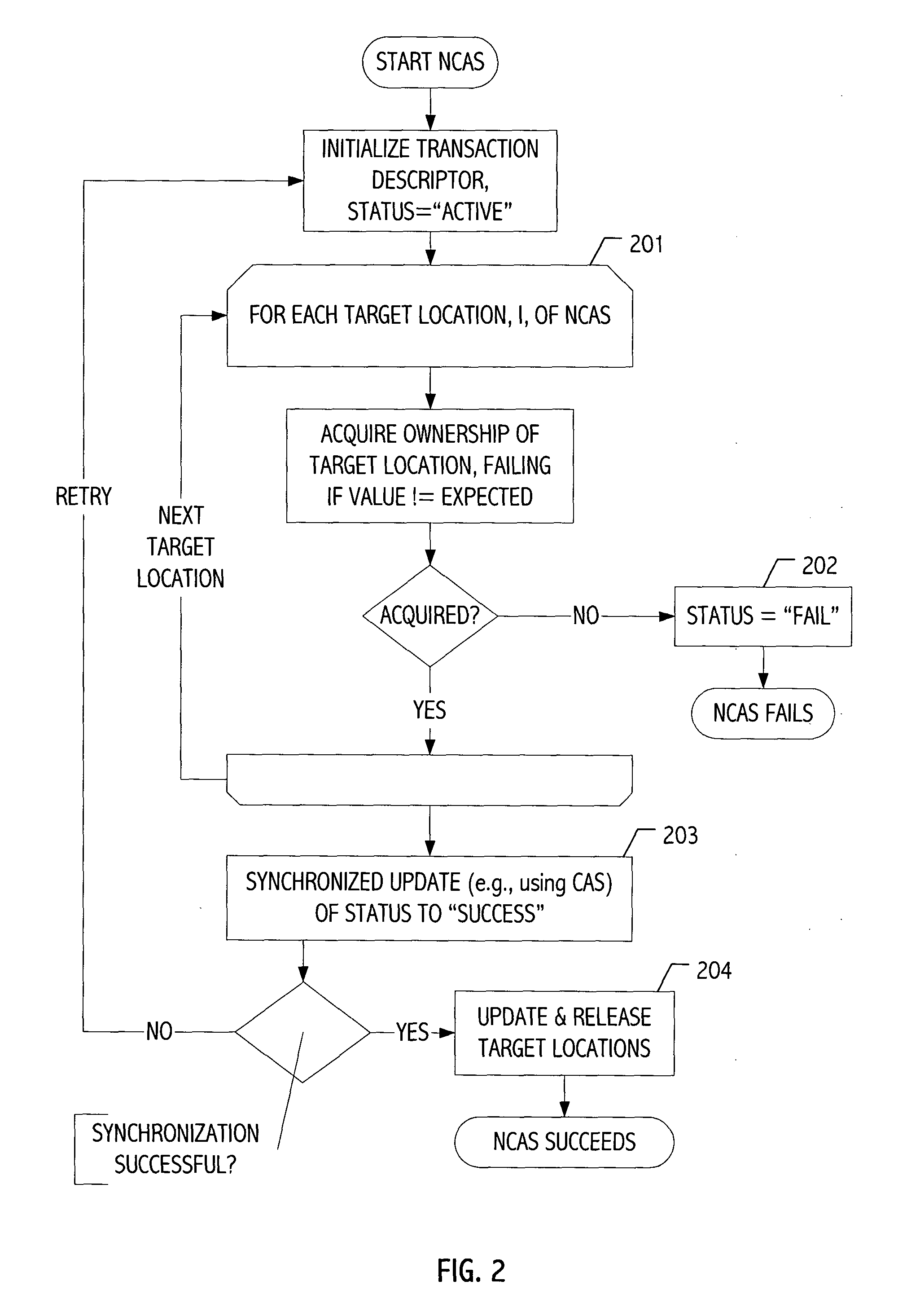Obstruction-free mechanism for atomic update of multiple non-contiguous locations in shared memory
a shared memory and atomic update technology, applied in the direction of multi-programming arrangements, instruments, program control, etc., can solve the problems of another operation from ", and achieve the goal of difficult to achiev
- Summary
- Abstract
- Description
- Claims
- Application Information
AI Technical Summary
Benefits of technology
Problems solved by technology
Method used
Image
Examples
Embodiment Construction
)
[0014] We have developed a new software-based technique for implementing multi-target atomic operations on an arbitrary number of non-contiguous memory locations using synchronization facilities available on many standard architectures. Such operations can be presented to the programmer in a variety of application programming interfaces (APIs), or simply employed (e.g., ad hoc) without definition of a standardized interface. Since the APIs tend to provide a useful descriptive context for illustrating our techniques, the description that follows assumes an API, though without limitation. One alternative API takes the form of two atomic operations: an atomic n-target compare-and-swap (NCAS) operation and an atomic load operation. The NCAS operation takes a sequence of n addresses, a.sub.1, . . . a.sub.n, a sequence of n old values, x.sub.1, . . . x.sub.n, and a sequence of n new values, y.sub.1, . . . y.sub.n. If the operation returns true, then for each i, 1.ltoreq.n, the value at l...
PUM
 Login to View More
Login to View More Abstract
Description
Claims
Application Information
 Login to View More
Login to View More - R&D
- Intellectual Property
- Life Sciences
- Materials
- Tech Scout
- Unparalleled Data Quality
- Higher Quality Content
- 60% Fewer Hallucinations
Browse by: Latest US Patents, China's latest patents, Technical Efficacy Thesaurus, Application Domain, Technology Topic, Popular Technical Reports.
© 2025 PatSnap. All rights reserved.Legal|Privacy policy|Modern Slavery Act Transparency Statement|Sitemap|About US| Contact US: help@patsnap.com



